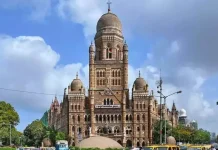- It is a peculiar conundrum/paradox plaguing the Indian policymakers when the loss-making public entities are infused with much-needed oxygen in the form of taxpayers’ money to keep them afloat. People closely following the current affairs diligently would not fail to notice that several public organizations despite incurring humongous losses are still persisted by the successive union governments. Did someone mention fiscal prudence? What is that? Populism, incentives, dole-outs, freebies, and extending a very long rope are the order of the day for any government assuming power. Antagonizing prospective vote-bank is a strict no-no, you see.

PC: iStock Photo
- Of course, political parties are also quite adept at bandying the disinvestment mantra more often than not, but we all know how sorely it lacks any substance to reach a logical conclusion. The resultant outcome is that the state-owned public institutions continue to enjoy government patronage even after being in the red for so long. As you are aware, the modern-day dynamically and technically driven competitive world in the private sector will not allow poor performances to persist, unlike the public sector entities. Perform or perish is what drives the competition-driven private sector. We all know how the private sector encourages outstanding performances but retains the right to show the door for non-performing laggards.
- However, the complacent public sector employees have no such Damocles Sword hanging overhead even if the performances are not up to scratch over a prolonged period. Lack of foresight plagues the government policies, you see. Take for instance the recent announcement made by the Government of India clearing a Rs. 1.64 lakh financial package to revive state-owned telecom firm BSNL, aiming to make it profitable by 2026-27. The package can be split into two categories. In the first category are measures that don’t require cash payment on the Government of India’s part. Under this category, BSNL will be allocated a 4G spectrum. Yes, you read it right it is a 4G spectrum even as we are all set to roll out 5G in the coming months.

PC: Sparsh Upadhyay
- In the second category are measures that have a budgetary implication. Here, the GOI will fund capital expenditure of Rs. 22,471 crores and extend viability gap funding. Looking from any angle, the package is unlikely to meet its goal. Why? Because the BSNL’s package comes in the backdrop of the ongoing spectrum auctions to roll out 5G technology. Moreover, nearly 98% of the population is covered by the 4G network. Given this context, it’s hard to see how the allocation of 4G at this juncture is a gamechanger for BSNL. Note that BSNL’s total losses in the last three years are almost Rs. 30,000 crores. In addition to lagging technologically and being burdened by losses, salary constraints imposed by GOI guidelines make it challenging for BSNL to attract talent.
- We understand the relevance of public entities like BSNL which are commercially unviable public entities but are of national importance. Essential but not profitable defines these entities. Since it is foolhardy to expect them to catch up with private sector competitors, a comprehensive blueprint for privatization should take precedence. Any dilly-dallying on the matter would only ensure taxpayers’ money goes down the drain. We know how an unviable Air India was sustained for such a long period before it was sold eventually. The Union Government is repeating the same with BSNL here. Hopefully, better economic sense prevails for the policymakers to understand the folly of encouraging deadwood public enterprises.





